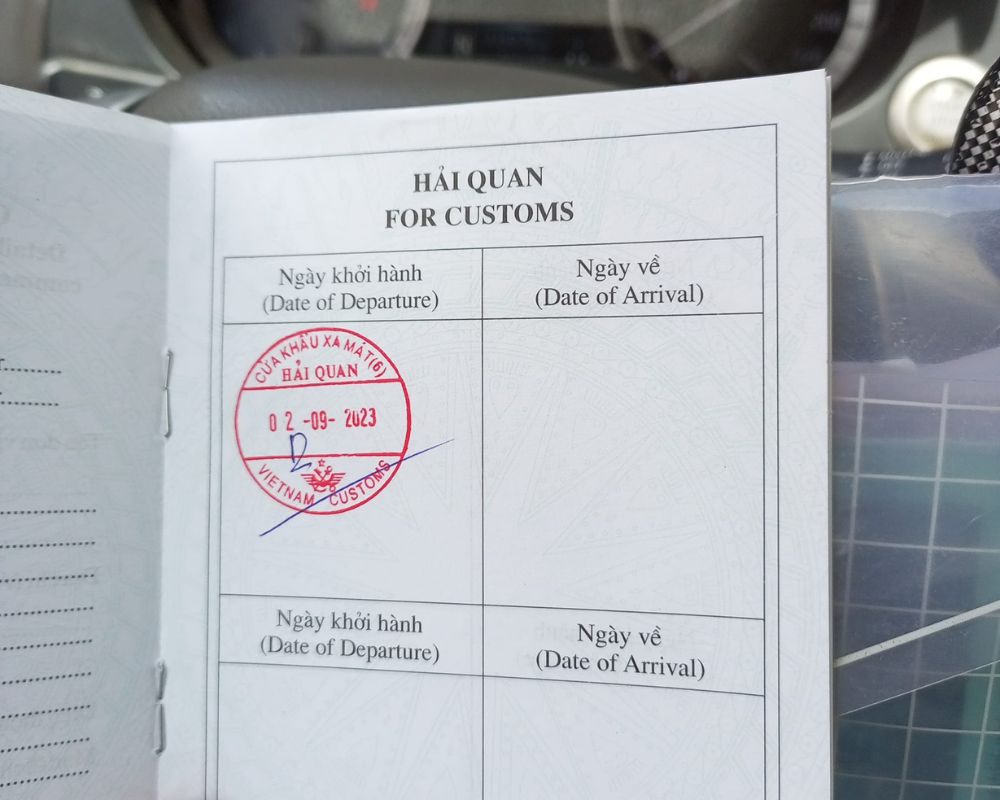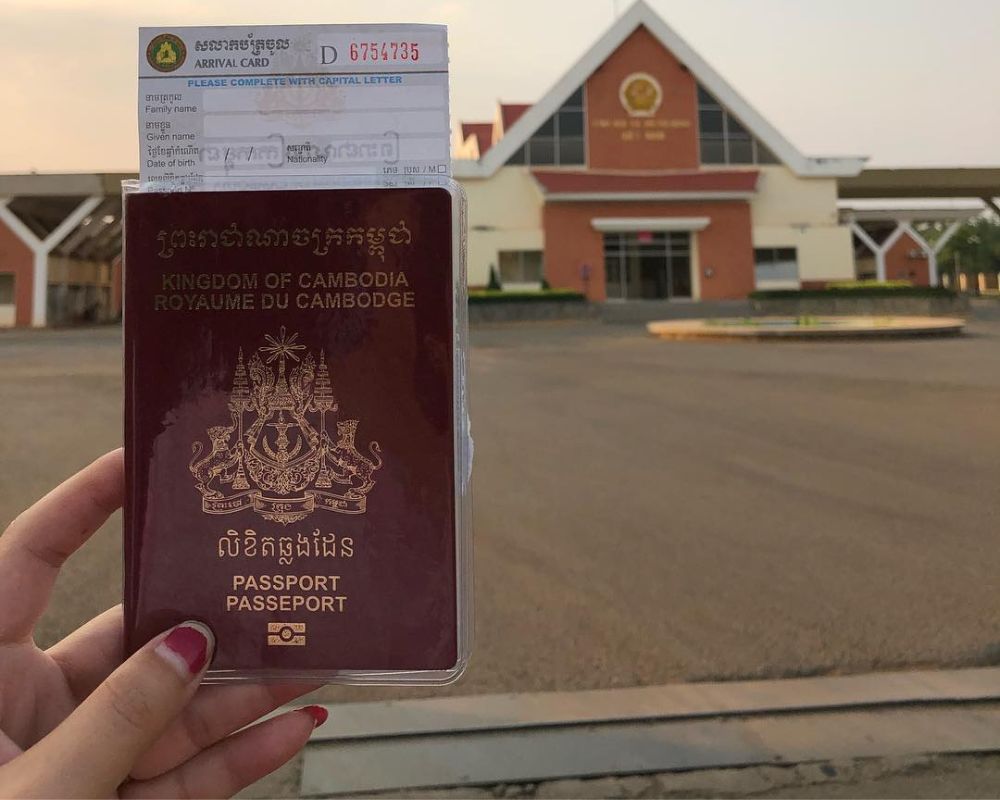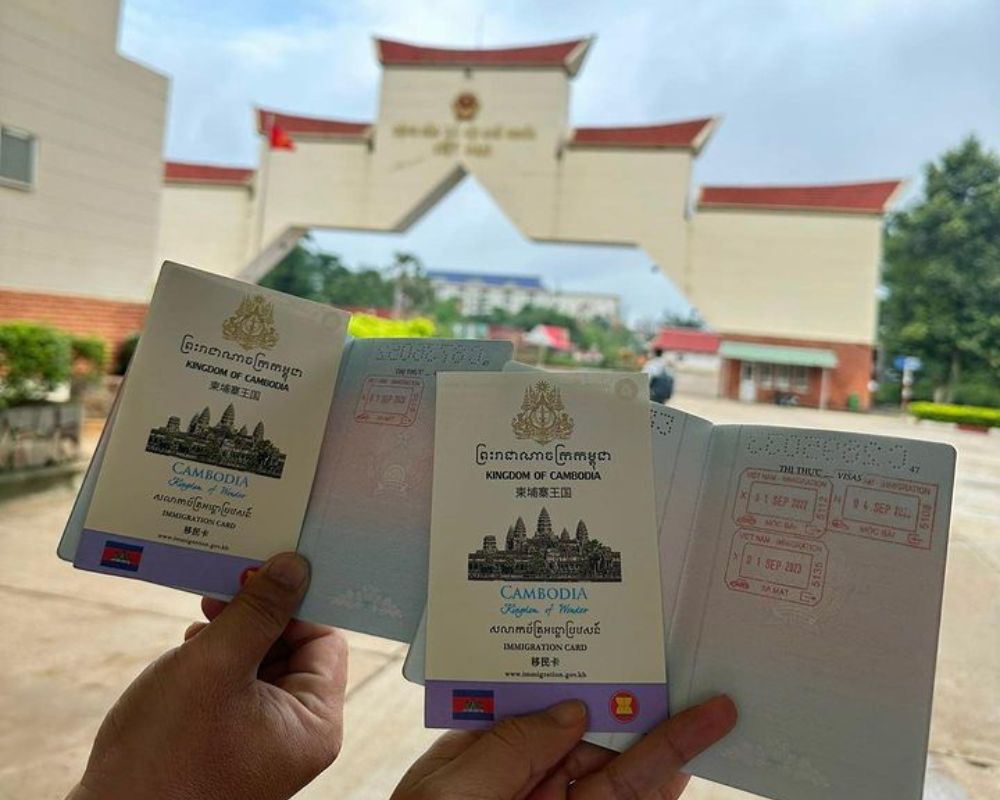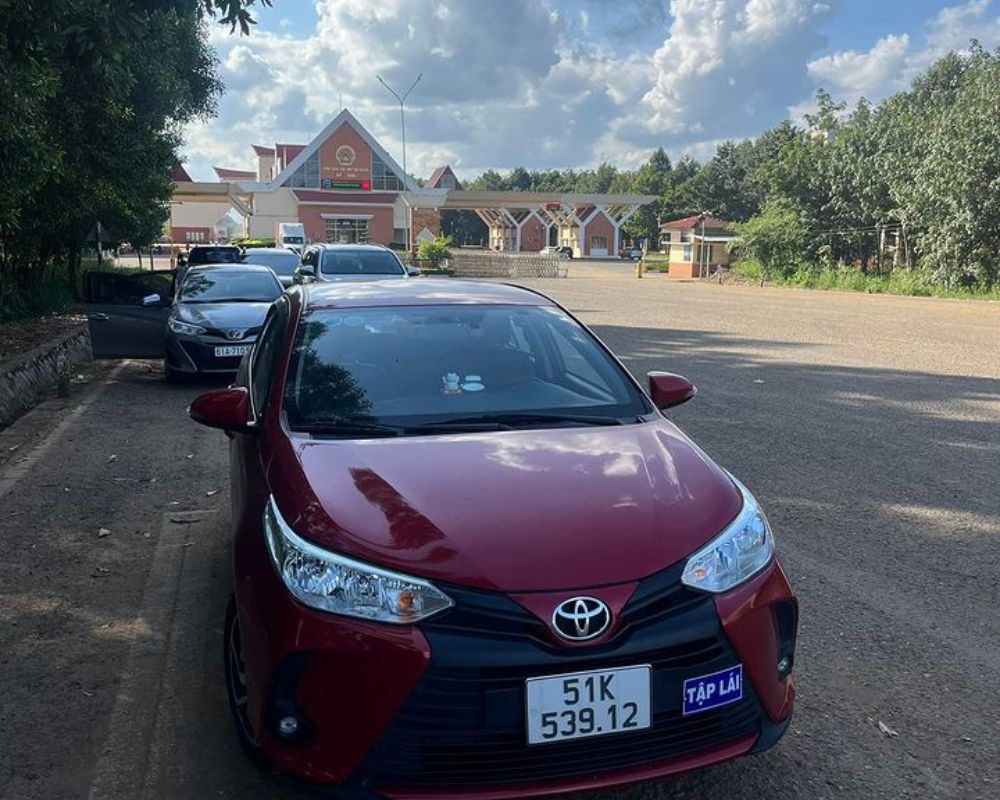Crossing borders can be a bit daunting, especially if you're not familiar with the process. But don't worry! If you're planning to cross from Cambodia into Vietnam or from Vietnam to Cambodia at the Xa Mat border, you're in the right place.
This guide is designed to be simple and full information. It covers everything foreign tourists need to know about obtaining a Vietnam visa, including the option for an E-visa, doing a visa run through Xa Mat, and the entry requirements for this particular crossing.
About Xa Mat Border
Xa Mat border, an international road gate situated in the Tan Lap commune, Tan Bien district, Tay Ninh province, serves as a vital link between Vietnam and Cambodia. This border gate is primarily connected with the Trapang Phlong Border Gate in Cambodia, making it a crucial point for cross-border movement and trade.
Located approximately 150 km from Ho Chi Minh City, Vietnam, and about 200 km from Phnom Penh, the capital city of Cambodia, Xa Mat Border finds itself strategically placed.
This proximity to major cities not only facilitates trade and commerce but also promotes tourism, enabling travelers to explore the rich cultural heritage and scenic beauty of both nations with relative ease.

Check in Xa Mat border
The border's significance is further enhanced by its role in the economic development of the region. It acts as a conduit for the exchange of goods, services, and culture between Vietnam and Cambodia, strengthening their bilateral relations.
Moreover, its well-developed infrastructure supports efficient customs and immigration processes, ensuring a smooth passage for tourists and traders alike.
For those looking to extend their stay beyond the E-visa's validity, the Xa Mat border visa run is an efficient method.
This involves leaving Vietnam, entering a third country such as Cambodia, and then re-entering Vietnam with a new E-visa, allowing for an extended stay. The process is relatively straightforward but requires careful planning to ensure all necessary documents are prepared for each border crossing.
Address: Tan Lap commune, Tan Bien District, Tay Ninh province, Vietnam
Opening hours: 7 AM – 8 PM
Map: https://maps.app.goo.gl/XBCx4EyvGuUHxVMA8
>>Read more: One day exploring Lo Go Xa Mat National Park Tay Ninh
Vietnam Visa Requirements at Xa Mat International Border Crossing
For those planning to cross into Vietnam through the Xa Mat border, it's crucial to be well-prepared regarding visa requirements to ensure a smooth entry. Here’s a simplified guide to what you need to know:
Visa Necessity: All foreigners must obtain a valid Vietnamese visa for both tourism and business purposes before attempting to cross the Xa Mat border. Without a visa, entry will be denied.
Passport Validity: Your passport should be valid for at least 6 months from your arrival date in Vietnam.
Blank Passport Pages: Ensure your passport has at least two blank pages available for the immigration stamp.

Get Your Entry Stamp at Xa Mat Border
Detailed guide:
1. Go to Xa Mat International Border Gate
2. Immigration Office Check-In
3. Fill Out the Forms: They’ll give you an entry and exit form. It's standard stuff – just the usual personal details.
4. Pay any applicable fees: This could include visa fees or border crossing charges. It’s usually best to have some cash on hand.
5. Get Your Entry Stamp: After checking your documents, the officer will stamp your passport. This stamp is your official OK to enter.
How to Obtain a Vietnam E-visa for Xa Mat Border Crossing
The Vietnam E-visa is an electronic visa option that facilitates entry into Vietnam through specified ports, including Xa Mat landport. Here’s how to get one:
Eligibility: As of 2024, citizens from 80 countries can apply for a Vietnam E-visa. Check the official Vietnam Immigration website or see this table.
| 1. Argentina |
21. Germany |
41. Romania |
61. Liechtenstein |
| 2. Armenia |
22. Greece |
42. Russia |
62. Macau (China) |
| 3. Australia |
23. Hungary |
43. Serbia |
63. Malta |
| 4. Azerbaijan |
24. Iceland |
44. Slovakia |
64. Marshall Islands |
| 5. Belarus |
25. India |
45. Slovenia |
65. Mexico |
| 6. Brunei |
26. Ireland |
46. Spain |
66. Micronesia |
| 7. Bulgaria |
27. Italy |
47. Sweden |
67. Moldova |
| 8. Canada |
28. Japan |
48. Switzerland |
68. Monaco |
| 9. Chile |
29. Kazakhstan |
49. Timor Leste |
69. Montenegro |
| 10. China* |
30. Korea (South) |
50. United Arab Emirates |
70. Nauru |
| 11. Colombia |
31. Luxembourg |
51. United Kingdom |
71. Palau |
| 12. Cuba |
32. Mongolia |
52. United States of America |
72. Papua New Guinea |
| 13. Czech Republic |
33. Myanmar |
53. Uruguay |
73. San Marino |
| 14. Denmark |
34. Netherlands |
54. Venezuela |
74. Saudi Arabia |
| 15. Finland |
35. New Zealand |
55. Albania |
75. Solomon Islands |
| 16. France |
36. Norway |
56. Andorra |
76. Vanuatu |
| 17. Georgia |
37. Panama |
57. Austria |
77. Bosnia and Herzegovina |
| 18. Hong Kong (China) |
38. Peru |
58. Belgium |
78. Brazil |
| 19. India |
39. Philippines |
59. Croatia |
79. Cyprus |
| 20. Indonesia |
40. Poland |
60. Estonia |
80. Fiji |
Citizens from this countries are eligible for Vietnam’s E-Visa program
*Note: China does not include e-passport holders.
Validity and Limitation: The E-visa is valid for up to 30 days and is a single-entry visa.
Application Process: You can apply for the E-visa online, from anywhere with an internet connection. The application process involves filling out a form and submitting it along with a photo of yourself and a copy of your passport page.
Processing Time: It typically takes about 3 business days to receive E-visa approval via email.

Run visa Xa Mat International Border Gate
Information details for applying for an E-visa:
To apply for a Vietnam E-visa for crossing at Xa Mat Border, follow these detailed steps to ensure a smooth and successful application process:
Step 1: Access the E-visa Application Form
Visit the official Vietnam E-visa application site at https://evisa.xuatnhapcanh.gov.vn/
Step 2: Fill in Required Information
Complete the application form with all required details, such as your nationality, reason for your visit, type of visa, and your planned date of arrival. Important: Select “checkpoint” and specify “Xa Mat landport” as your entry port.
Step 3: Opt for Supplemental Services (Optional)
If you're in a hurry, consider adding the urgent service to your application. This option can expedite the processing of your E-visa, enabling you to receive it within one working day or even in just two hours.
Step 4: Upload Your Photo and Passport
Passport: Upload a scan or clear photo of your passport's information page. Ensure all personal details are visible and legible, with no parts of the passport obscured.
Photo: Submit a recent photograph of yourself. Glasses should not be worn in this photo.
Step 5: Review and Pay for the Visa Application
Carefully review your application for any errors. Then proceed with the payment. Upon successful payment, you'll receive a confirmation email to the address you provided.
Prices:
- $25/single-entry electronic visa
- $50/multiple-entry electronic visa
Step 6: Receive and Print Your E-visa
After a processing time of 3 business days, your Vietnam E-visa will be sent to your email.
Double-check the E-visa for any discrepancies or errors. Or enter your registration code, email, and date of birth to check your status in the E-visa search menu at https://evisa.xuatnhapcanh.gov.vn/tra-cuu-thi-thuc
Once everything is in order, print out the E-visa in preparation for your trip and for crossing at Xa Mat international border crossing.

Visa at Xa Mat Border
Following these steps carefully will help ensure that you have all the necessary documentation for a smooth entry into Vietnam through the Xa Mat border crossing. Always check the most current visa requirements and travel advisories before your trip.
>>Read more: The History Of The Black Virgin Mountain Tay Ninh Vietnam
Important Tips for E-visa Application
Correct Entry Port: On the application form, specify “Xa Mat landport” as your entry port to ensure your visa is valid for crossing at Xa Mat.
Application Accuracy: Double-check all the information you provide on the application to avoid any mistakes that could delay processing or affect your ability to enter Vietnam.
By following these guidelines and ensuring you have all the required documents and information, you can enjoy a hassle-free entry into Vietnam through the Xa Mat border. Always stay updated with the latest visa policies and procedures by consulting official sources or the Vietnamese embassy in your country.
How to get to Xa Mat border gate?
Getting to Xa Mat International Border Gate is straightforward, whether you're coming from Vietnam or planning your route from Cambodia. Here's a simple guide to help you navigate your way there:
From Ho Chi Minh City, Vietnam:
By Bus: Several bus companies offer direct services to Xa Mat Border Crossing. Look for buses heading to Tay Ninh province and ensure they stop at Xa Mat. The journey from Ho Chi Minh to Xa Mat border crosiing takes approximately 3 to 4 hours, depending on traffic.
Several reputable bus companies operate between Ho Chi Minh City and Xa Mat Border Gate include: Phuong Trang (Futa Bus), Sapaco Tourist and Kumho Samco.
Ticket prices to Xa Mat Border Gate from Ho Chi Minh City generally range from VND 100,000 to VND 200,000 (approximately $4 to $8 USD), depending on the bus company and the class of service (e.g., standard, VIP).

Rent a private car to Xa Mat International Border Gate
By Car or Motorbike: If you prefer driving, take National Highway 22 to Tay Ninh province. From there, follow the signs leading to Xa Mat Border Gate. The drive is scenic and allows for stops along the way.
>>Read more: How To Do A Renew Visa To Moc Bai Border From Ho Chi Minh
